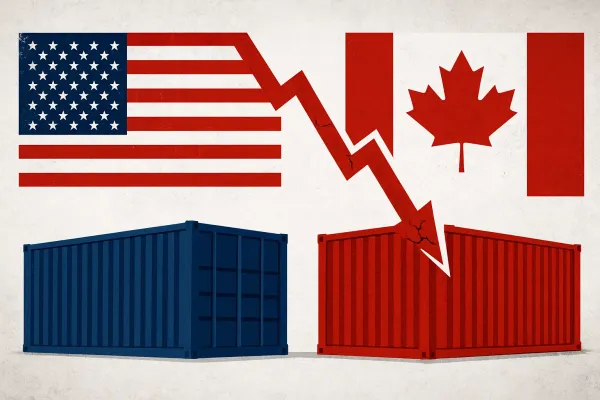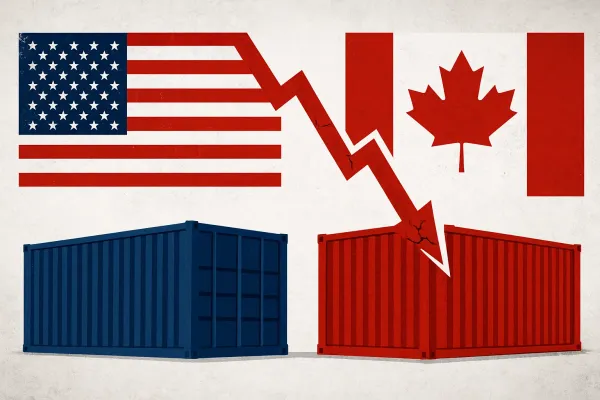The Changing Face of Indian Democracy: Governance, Opposition, and Public Perception
Indian democracy is evolving. Explore how digital governance, opposition challenges, and changing voter expectations are reshaping India's political future in 2025.

Look, Indian democracy has never been boring. It's always been this wild, unpredictable thing that somehow works despite everyone betting against it. But lately? Something's shifted. Not in an overnight revolution kind of way, but slowly enough that you almost don't notice until you step back and think about it.
The way governments actually govern now, how opposition parties are trying (and often failing) to stay relevant, what regular people expect when they cast their vote—all of this looks pretty different from what it was even ten years ago. And it's worth understanding what's changed, not because we're here to tell you it's all good or all bad, but because we're all living through it.
The Digital Governance Revolution
From Queues to Apps
Remember when getting anything done with the government meant taking a day off work? You'd go to some office, wait in a queue for hours, deal with a clerk who might or might not help you depending on their mood, and probably slip someone some cash to "speed things up." That's not ancient history—that was just a decade ago.
Now farmers who farm in Maharashtra, Uttar Pradesh or in any state in India gets his subsidy money straight into his bank account. No middleman, no clerk, no bribes. He doesn't even have to leave his village. Direct Benefit Transfer has moved something like 35 lakh crore rupees this way. That's not a small change—that's a complete flip in how citizens and government interact.
And it's not just money transfers. UPI has made India a leader in digital payments (which, honestly, nobody saw coming). We've got DigiLocker for documents, Aadhaar for identity, and a bunch of apps for everything from filing taxes to checking your ration card status.
What This Shift Really Means
Here's the thing though—this isn't just about making life convenient. When money flows directly to people instead of through party workers and local officials, you're fundamentally changing who has power. The old system worked on patronage. You needed to know someone, be part of a network, maybe belong to the right community or party. Digital direct transfers cut through all that.
Does it eliminate corruption? Not entirely. But it changes the game. And yes, before you ask—there are real concerns about privacy, about the government having this much data on everyone, about what happens to people who don't have smartphones or reliable internet. Nothing's perfect.
Plus, there's been this shift to what they call "mission mode" governance. Big centralized programs with tight deadlines and constant monitoring. Swachh Bharat for toilets, housing schemes, infrastructure projects—all run top-down with measurable targets.
The Trade-Offs Nobody Talks About
Does this approach get things done faster? Usually, yes. But does it sometimes overlook what individual states actually need or want? It can, which means local priorities may not always get the attention they deserve. This is the tension at the heart of it—efficiency versus flexibility, speed versus local adaptation. How people see it often depends on their perspective.
What’s more concerning is when anyone acts as if there are no trade-offs. Digital governance has certainly improved many things, but it has also brought new challenges. Both realities can coexist.
The Opposition's Persistent Dilemma
The State vs. National Paradox
Now let's talk about the opposition, because honestly, they're going through something. Here's what's weird: opposition parties can absolutely win state elections. DMK runs Tamil Nadu. Trinamool dominates West Bengal. Congress governs a few states. Regional parties are doing fine in their territories.
But scaling that up to national politics? That's where things fall apart. And we don't think it's just a leadership problem, though leadership definitely matters.
Beyond Just Leadership Problems
The deeper issue is this: when the conversation is all about delivery—how many toilets got built, how many houses were constructed, how efficiently benefits reached people—what's your counter-narrative? You can point out what didn't work, sure. But then what? What's your alternative approach that people can actually understand and believe in?
We're not saying it's impossible. But it requires more than just criticizing the government. Anyone can criticize, but governing credibly is harder.
The Coalition Conundrum
Then there's the whole coalition mess. Every few months we hear about opposition unity, parties coming together, alliances being formed. And every time, it falls apart over the same issues. Regional parties care most about their own states (which makes sense—that's where their power is). National coordination comes second. Add in genuine ideological differences about economic policy, social issues, governance philosophy, and you've got a recipe for instability.
The INDIA alliance tried. They managed to coordinate on some things. But sustained collaboration with clear leadership and unified messaging? That's still missing.
The Communication Gap
Also, can we talk about how bad most opposition parties are at digital communication? The ruling party figured out years ago that you reach voters on their phones now, not through newspaper op-eds or press conferences. Mann Ki Baat, direct social media, apps, targeted messaging—they've got that infrastructure running.
Most opposition parties are still acting like it's 2010. They'll hold a press conference, maybe tweet about it, and wonder why nobody cares. When your opponent is speaking directly to millions via their phones and you're waiting for journalists to cover your statements, you've already lost half the battle.
Opposition Is Not Over Yet
But here's the thing—writing off the opposition is premature. Indian politics has always been cyclical. Parties that looked invincible suddenly lost. Issues like unemployment, inflation, farmer problems—these don't just disappear. And regional parties, whatever their national coordination problems, remain powerful in their states.
The real question for opposition parties isn't whether they can critique the government—anyone can complain. The challenge is presenting an alternative that voters find believable, such as addressing issues like voter fraud (Vote Chori).
Public Perception: What Indians Want From Democracy
The Performance Expectation
So what do voters actually want now? This has changed quite a bit. More and more, especially younger voters, people are judging governments on what they deliver. Not just promises or ideology, but actual tangible results.
That doesn't mean ideology is dead. But ideology has expanded to include expectations of competent governance. It's not enough to talk about your principles—you need to show you can run things effectively.
What the Numbers Show
Look at survey data and you'll see people consistently care most about jobs, inflation, and basic amenities. But they're also politically sophisticated. Voter turnout in India often beats established Western democracies. People vote differently in state versus national elections, showing they understand these are different levels of government with different responsibilities.
That's not low-information voting. That's actually pretty nuanced political thinking.
The Social Media Effect
Social media has completely changed the way political conversations happen. On the positive side, you no longer have to wait for a newspaper editor or TV producer to decide what matters. Discussions now happen directly in WhatsApp groups, Twitter threads, and other online spaces—not just in English-language op-eds that most Indians rarely read.
But there’s a downside too. Social media has also made it easier for misinformation to spread and for people to get trapped in echo chambers. The very tools that opened up access to information can also be used to manipulate it. We can’t celebrate the benefits without also recognizing the risks.
The Youth Factor
Young voters are different. They consume politics differently—mostly through phones, through influencers and memes as much as traditional news. They care about different things too—climate change, gender equality, responsive governance. They have less patience for politicians who just give speeches without actually doing anything.
But they're also more vulnerable to polarizing narratives and performative politics.
Trust in Institutions
Here's something interesting: Indians still mostly trust the electoral process. People believe their votes count and elections are conducted fairly. But trust in other democratic institutions—media, judiciary, even Parliament—that's more shaky and varies a lot.
Which shows people understand that democracy isn't one thing. It's a collection of institutions, and they can judge each one separately. That's actually a mature way to think about it, even if the underlying trust issues are concerning.
The Intersection: Where Everything Connects
How Governance Shapes Politics
These three things—governance, opposition, public perception—they're all connected in ways that matter. When the government delivers benefits efficiently, it shapes how people see politics. And that forces the opposition to change its strategy. You can't just yell "corruption" anymore when the subsidy is showing up in people's bank accounts.
Why Opposition Weakness Matters for Everyone
And look, weak opposition isn't just bad for opposition parties. It's bad for democracy. You need strong opposition to scrutinize policy, to highlight failures, to present alternatives. When opposition is fragmented and ineffective, you get less oversight of government actions, weaker parliamentary debate, fewer checks on executive power.
That should worry everyone, regardless of which party you support. Democracy needs functional opposition.
The Perception Battle
Public perception drives elections, obviously. If people feel their lives are improving, they reward the incumbent. If they feel left behind, they look for alternatives. But perception itself has become this contested battleground—shaped partly by real experience, partly by caste and community identity, partly by what narratives dominate social media and WhatsApp.
That's the messy reality of how democracy actually works.
Challenges and Opportunities Ahead
The Digital Divide Question
So what are the big challenges going forward? First, we need to make sure digital governance doesn't exclude people. Technology should include everyone, not create a new divide between those with smartphones and internet and those without. That's not just a nice ideal—it's essential if we're serious about this approach.
The Opposition Vacuum
Second, can we develop a functional opposition? Not just parties that can win occasional state elections, but an actual alternative at the national level that presents coherent ideology and credible governance plans? Democracy needs meaningful choice. Right now, that choice feels limited.
Information vs. Misinformation
Third, the whole information ecosystem needs attention. How do you fight misinformation without crushing free speech? How do you create informed citizens in an age of algorithmic feeds and echo chambers? We don't have the answers, but these are critical questions for democratic health.
Federal vs. Central
Fourth, there's this tension between centralization and federalism. Can you pursue efficient national programs while respecting what different states need and want? India's always been diverse—different languages, cultures, problems. One-size-fits-all governance has never really worked here. But neither has complete fragmentation. Finding that balance isn't easy.
Beyond Elections
Finally, we need to think about democratic institutions beyond just voting. Courts, media, Parliament, bureaucracy, civil society—all of these need to be strong and independent. Elections alone don't make a healthy democracy. These other institutions matter just as much, maybe more, and they need constant attention and reform.
Conclusion: Democracy in Motion
So is Indian democracy becoming less democratic? We don't think so. But it's definitely becoming different. Governance is more digital, more centralized, more focused on measurable delivery. Opposition politics is struggling to find its footing nationally even while succeeding in states. Citizens are more engaged but also more polarized, expecting both performance and representation.
None of this means India's democratic future is predetermined. Democracy isn't a destination—it's a process. Messy, contentious, always evolving. The question isn't whether Indian democracy is perfect. No democracy is. The question is whether it can self-correct, whether institutions can adapt and strengthen, whether citizens stay engaged and informed.
What we see is both progress and problems, achievements and challenges. Anyone telling you it's all going great or all falling apart is oversimplifying. Reality is more complex and more interesting than that.
The story of Indian democracy is still being written. Over a billion people are writing it together—through their votes, their voices, their visions of what India should be. That's worth paying attention to, whatever your politics.
Related Articles:
- India's Strategic Balancing Act - 2025: Managing Relations with the US, Russia, and China – Explore how India's domestic political priorities shape its foreign policy approach and navigation of great power competition.
- 2025 Russia–Ukraine War Analysis: NATO's Role, Trump, and What's Next – Understand global geopolitical shifts that influence India's strategic calculations and policy decisions.
- Power Plays: How the U.S. Leverages Energy and Climate for Global Diplomacy – See how major powers use governance tools for international influence—context for understanding India's own strategic approaches.
Loved this article?
Visit our main page for more insights and subscribe for updates!





